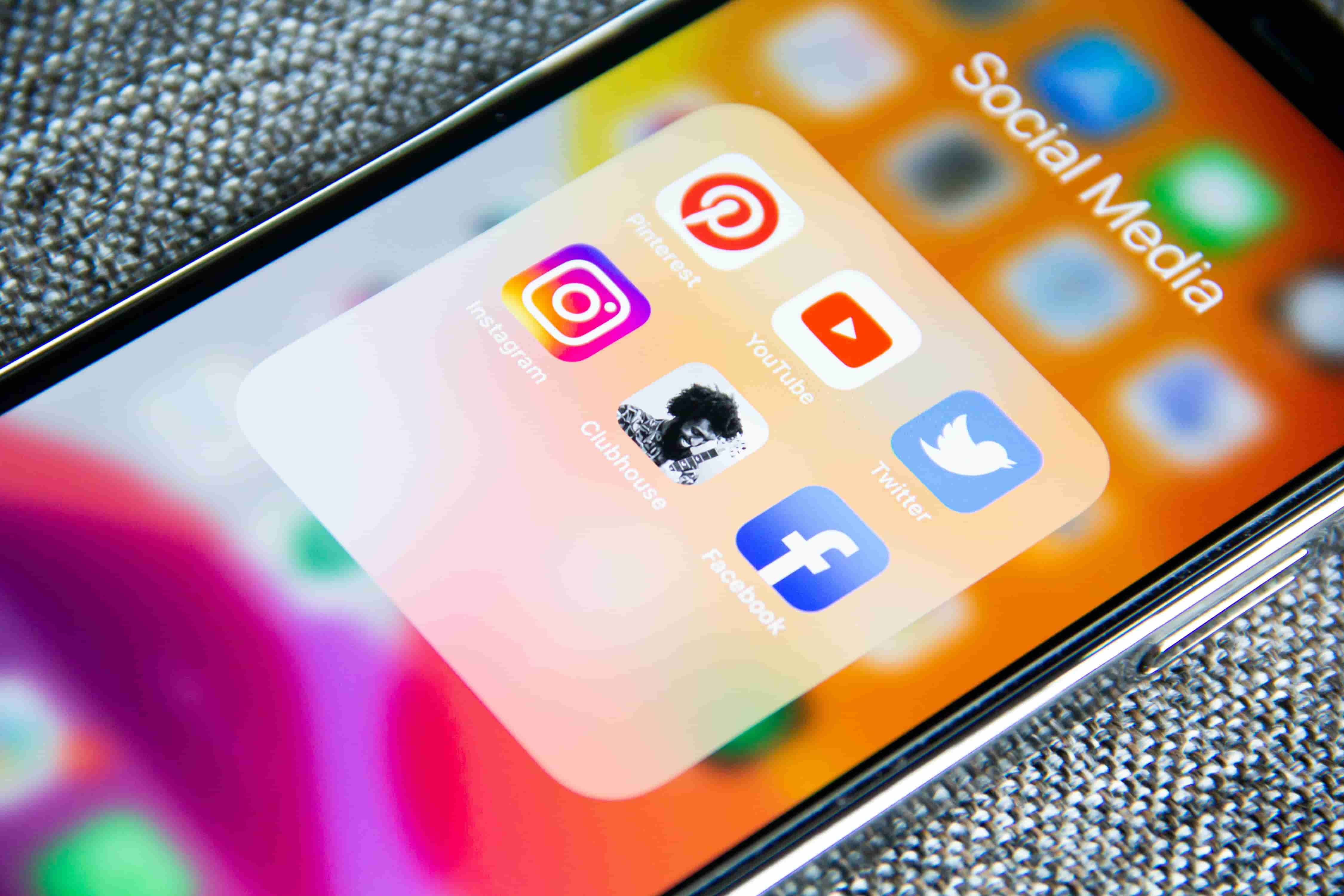What Is A Media Plan? A Step-By-Step Guide on Media Planning
Want to save time?
Summarize this article in seconds with AI
Hong Kong's market is ever-changing and complex, requiring savvy media planners to craft strategic and nuanced plans to effectively reach consumers. With its dense population, high internet and smartphone penetration, and diverse mix of Chinese and Western influences, Hong Kong offers a unique media landscape. A successful media planning must leverage both traditional tactics like out-of-home (OOH) and TV ads as well as digital platforms popular with tech-savvy Hong Kongers, especially social media and mobile messaging. Local nuances around language, culture and regulatory restrictions add further complexity when devising integrated campaigns. By analyzing recent case studies and media plan examples and examining available consumer data and insights, media planners can make informed choices on everything from media mix to creative execution and targeting. Hands-on experience in the Hong Kong market is invaluable. There are no shortcuts to truly understanding consumer behaviour and crafting plans that cut through the clutter to deliver results. With the right strategies and adaptive thinking, media planners can thrive amidst Hong Kong's kinetic energy.
What is a Media Plan?

 A media plan is a strategic blueprint for distributing a brand's advertising message across a mix of media outlets. It involves detailed research and analysis to determine the most effective way to reach a target audience, considering factors like media habits, media plan budget allocation, and campaign goals.
A media plan is a strategic blueprint for distributing a brand's advertising message across a mix of media outlets. It involves detailed research and analysis to determine the most effective way to reach a target audience, considering factors like media habits, media plan budget allocation, and campaign goals.

Key Elements of a Media Plan
Source: Alison Pang via Unsplash
Target Audience refers to a specific group of consumers most likely to respond positively to your marketing or advertising efforts. This group is identified based on shared characteristics such as demographics (age, gender, income level), psychographics (lifestyle, interests, values), location, and buying behaviour. For example, a media campaign targeting young professionals in Hong Kong might focus on digital platforms such as Instagram, as 57.3% of Instagram users in Hong Kong are aged 18-34. 
Source: Adintime Client
Media Selection involves choosing the most appropriate media channels to deliver a marketing or advertising message to the target audience. This process is guided by various factors, including the characteristics and preferences of the target audience, the goals of the media campaign, and the nature of the message being conveyed. Media channels can include traditional outlets like TV, radio, print (newspapers, magazines), outdoor advertising (billboards, bus ads, tram ads, MTR ads), and digital platforms (social media, online advertising, email marketing). The selection is aimed at maximizing the reach and impact of the advertising message while staying within budget.

Budgeting in the context of marketing and advertising refers to allocating financial resources to various aspects of a marketing campaign. This includes determining how much money to spend on different media channels, creative development, production costs, and other campaign-related expenses. Effective budgeting ensures the campaign has sufficient funds to achieve its objectives without overspending. It requires a strategic balance between the desired outcomes (reach, engagement, conversions) and cost efficiency. Hong Kong's outdoor advertising, for example, can range from HK$15,000 to HK$500,000 per month, depending on location and size.
Scheduling in a media plan is the process of planning when and where marketing and advertising activities will occur. This involves determining the timing and frequency of ad placements across selected media channels. The goal is to optimize the visibility and impact of the marketing message. Scheduling decisions are made based on factors such as the media consumption habits of the target audience, seasons, campaign duration, and specific time-sensitive goals (like promoting a sale or a holiday special). Effective scheduling ensures that ads are seen or heard by the target audience at the most opportune times to increase the likelihood of engagement and response.
![]()
Performance Metrics or Key Performance Indicators (KPIs) in a media plan refer to indicators used to evaluate the effectiveness of a media campaign. These metrics are crucial for assessing whether the campaign is meeting its objectives, such as increasing brand awareness, driving sales, or enhancing customer engagement. Common KPIs include website traffic, conversion rates, click-through rates, social media engagement (likes, shares, comments), and return on investment (ROI). These metrics provide tangible data to gauge the success of the campaign and guide future media planning decisions.
Let's breakdown the 7 steps of Media Planning:
Step 1: Know Your Audience
It is crucial to get a clear picture of your target audience before you even begin any other media planning process. It is like choosing the right canvas with the right material and size to paint on. To do that, you must start with an in-depth audience analysis. This involves understanding not just demographics but also behaviours and preferences. Let's see some examples of audience research techniques...

- Surveys and Focus Groups: These are research methods used to collect data directly from a target demographic. Surveys involve asking a series of questions to a large group of people, while focus groups involve more in-depth discussions with a smaller group. These techniques help in understanding consumer preferences, attitudes, and opinions. An example finding would look like:
A cosmetics company conducted a survey and found that 80% of respondents in Hong Kong preferred natural ingredients, leading to a campaign focused on organic products.
Another example:
Focus groups with young professionals might reveal a growing interest in eco-friendly products, guiding a brand to highlight sustainability in their marketing.
- Online Behavior Analysis: This refers to the use of tools like Google Analytics to study consumer activities and preferences on the internet. It involves tracking and analyzing data such as website visits, page views, click-through rates, and online purchasing patterns, providing insights into consumer behavior in the digital space. Example being:
An online retailer used Google Analytics and discovered that most of their Hong Kong traffic came from mobile devices, prompting a redesign of their mobile shopping experience. Analysis of search trends could show a rising interest in “home workout equipment” in Hong Kong, indicating a potential market for fitness brands.
- Cultural Insights: This involves observing and understanding local trends, events, and consumer behaviours to identify marketing opportunities. For example, analyzing consumer engagement and interests during local events like the Hong Kong Sevens can reveal valuable information about cultural preferences and trends, which can inform targeted advertising strategies. Some examples of how you can use these insights are:
Observing increased activity around the Chinese New Year, a beverage company launched a limited-edition themed product, resulting in a 50% increase in sales during the festival period.
Or...
During the Hong Kong Art Week, an art supplies retailer might run special promotions, tapping into the increased interest in art and creativity.
Recommended:
Step 2: Set Goals and Media Plan Budgets
Clearly defined objectives of media planning and a well-thought-out budget are the foundation for a successful campaign.
Let's look at some of the most important components to consider when allocating a media plan budget:
- Sales and Awareness Goals: A fashion retailer might target a 20% increase in online sales, leveraging Hong Kong's high internet penetration rate of 92%. Another goal could be enhancing social media presence, aiming to double Instagram followers within a year.
- Budget Planning: Considering the rise in mobile commerce, a significant portion of the budget could be allocated to mobile-specific advertising campaigns. For instance, a beauty brand may allocate 30% of its budget to influencer collaborations, recognizing the 60% engagement rate from influencer-led campaigns.
- Cost-Benefit Analysis: Using "Digital vs. Traditional Media" to weigh the costs, a streaming service might find that sponsoring a popular local podcast at HK$5,000 per episode reaches a niche, engaged audience more effectively than a broad-reaching but more expensive TV campaign.
- ROI Analysis: A gourmet food chain could analyze past campaigns, noting that a recent email marketing campaign yielded an ROI of 200%, making it a more cost-effective choice compared to high-cost outdoor advertisements.
Each element in this step underscores the importance of setting measurable objectives and allocating budget effectively, using both quantitative data and qualitative insights to maximize the impact of a media campaign. In other words, it increases the likelihood of a successful campaign!
Step 3: Craft Your Media Strategy
Now, it is time to develop a strategy for the right channels for your integrated media plan, crafting messages that resonate with your target audience. The strategy should align with brand objectives, be culturally relevant and aware, and utilize data-driven insights across channels.
Here are a examples of strategic media mix planning approaches:

Source: Adem Ay via Unsplash
- Channel Selection: Imagine a retail brand balancing its advertising between digital platforms and traditional TV. For instance, they might allocate 40% of their budget to digital ads targeting Hong Kong’s tech-savvy younger demographic, while reserving 60% for TV commercials aired during prime time to reach a broader audience.

- Localized Content: Consider a food company launching a Lunar New Year-themed campaign. They could create special packaging with traditional festive motifs and run ads featuring local celebrities enjoying their products at family gatherings, resonating with Hong Kong's cultural celebration.
- Data-Driven Approach: A tourism agency might use data showing a high engagement rate for travel vlogs among Hong Kong residents. Consequently, they could focus on creating captivating travel video content for social media platforms to attract potential tourists interested in exploring new destinations.
Step 4: Choosing Your Channels
Selecting the right media channels to engage Hong Kong's tech-savvy, fast-paced consumer base requires strategic analysis of demographics, media consumption habits and cultural nuances. With high internet penetration rate, digital platforms offer precision targeting but traditional outlets still hold relevance in Hong Kong's hybrid environment. The media mix must balance wide reach, contextual relevance and measurable results.
Identifying Effective Media Outlets
- Outdoor/OOH Advertising: Considering Hong Kong's crowded urban environment, high-impact outdoor advertising placements can effectively capture audience attention. Popular options include bus shelters, MTR ads, tram ads, and massive LED billboards in bustling areas like Times Square in Causeway Bay.
- Digital and Social Media: Given Hong Kong's 93.1% internet penetration, digital and social media enable hyper-targeted promotions. For example, LinkedIn sponsored content can precisely target working professionals while Spotify audio ads can reach music lovers. Hong Kong's high social media usage also makes platforms like Facebook and Instagram optimal for creatively engaging audiences.
- Traditional Media: While skewing older, traditional outlets like primetime TV ads, newspapers and magazines still play an important role, especially for finance, real estate and other serious sectors. Choose programming or publications popular among your demographic.
- Integrated Omni-Channel Approach: A strategic media plan thoughtfully combines digital, traditional, social and outdoor channels to maximize reach and results. Take a data-driven approach to optimize your media mix based on campaign KPIs and audience insights. Continually test new platforms and placements as the media landscape evolves.
Step 5: Media Buying
The media buying process is where you put your plan into action, securing ad spaces and negotiating rates. Working with advertising experts, such as the ones at Adintime, can significantly reduce the stress around the complicated task of media buying. Ad experts have the deep knowledge and industry connections to give you the best insights and rates. The media buying process generally involves the following steps:
- Select Media Outlets: Base your selection on research and strategy. For example, choose the South China Morning Post for press ads to target business professionals or MTR ads in the city centre for work commuters.
- Negotiate Rates: Use industry benchmarks to negotiate the best prices. Outdoor ad space in a prime location like Causeway Bay might cost more but also offers higher visibility.
- Purchase and Adapt Creatives: Buy space and adapt your creative materials for each medium. A visually striking design might work well for a billboard but needs simplification for a newspaper ad.
- Plan the Schedule: Time your ads for maximum impact, like scheduling social media posts during evening peak hours when user engagement is highest. For another example, when B2B media planning, you want to be mindful of the major holidays when offices are closed or on vacation which can yield low performing numbers.
- Adapt and Oversee: Be ready to tweak your strategy based on real-time performance data. For instance, if an Instagram ad isn't performing as expected, adjust the visuals or content. Specifically for social media ads, it is advised that you run an A/B test with each campaign. an A/B test allows you to test one variable at a time to see which performs best. For example, you may want to create two different captions to see which one is capturing audience better.
Step 6: Launch and Learn
It's finally launch time! But the work doesn't stop here. This phase requires close monitoring and adaptability, as performance data starts flowing in. Carefully tracking the KPIs can help enhance current campaign performance as well as inform future ones. It's important to develop a system to collect and monitor the data, too.
Now, let's look at the steps in Campaign Execution and Optimization:
- Roll Out Ads: This is the moment all your hard work hits the chosen channels. It's Day 1 of your media campaigns This step should be timed strategically, considering factors like audience online habits or TV viewing times in Hong Kong.
- Monitor Performance: Utilize analytical tools to meticulously track the performance of each campaign element. For instance, in digital campaigns, closely monitor metrics like click-through rates, conversion rates, and engagement statistics. In the context of Hong Kong, where digital consumption is high, these metrics are invaluable indicators of campaign resonance.
- Iterative Improvements: Regularly review campaign data and be prepared to pivot! For example, if an outdoor ad in a bustling Hong Kong district like Tsim Sha Tsui isn’t drawing the expected attention, swiftly modify the creative elements or message. Similarly, if a social media ad isn't performing as expected, experiment with different content formats or posting times.
- Feedback Integration: Collect and analyze consumer feedback, both direct and indirect, across all channels. This can include social media comments, customer inquiries, and engagement levels. In Hong Kong's diverse market, paying attention to language and cultural nuances in feedback can be crucial.
- Adaptation to Trends: Stay attuned to emerging trends or changes in consumer behavior. In a fast-paced market like Hong Kong, a sudden shift in trends, such as a new social media platform gaining popularity, can necessitate quick strategic adjustments.
- Cross-Channel Synergy: Ensure that learnings and adjustments in one channel inform strategies across others. For example, insights gained from digital ads' performance can influence the content strategy for radio or TV ads in Hong Kong.
Step 7: Measure and Reflect

Source: Adintime Client
After a campaign concludes, the process of measuring and reflecting is key for future success. It's an opportunity to turn data into knowledge and evolve marketing media plans and strategies. Purely looking at the numbers is not enough, it is crucial to combine different data set to paint a complete story to help you understand what's working and what needs improvement!
Evaluating Campaign Success
- Performance Review: This involves a thorough comparison of your campaign outcomes against the set objectives. For example, if your goal was to enhance brand recognition in Hong Kong, assess metrics like brand mention frequency on social platforms or changes in search engine queries related to your brand.
- ROI Analysis: Calculate the return on investment(ROI) to understand the economic efficiency of each channel. This calculation might reveal that, for instance, your online display ads in Hong Kong's popular e-commerce sites had a higher ROI compared to traditional print ads, guiding future budget allocations.
- Quantitative and Qualitative Insights: Balance numeric data with qualitative feedback. For example, alongside web traffic statistics, consider customer feedback collected through surveys or social media platforms to gauge brand perception shifts.
- Document Learnings: Create a detailed record of successes and setbacks. For instance, if a promotional video on local Hong Kong social media channels garnered unexpectedly high engagement, analyze why it resonated with the audience and how this approach can be replicated or improved in future campaigns.
- Long-Term Trends vs. Short-Term Results: Distinguish between immediate results and long-term trends. A short-term spike in sales in Hong Kong due to a festive discount might differ in significance from a steady increase in customer loyalty over several months.
Conclusion
In the fast-moving Hong Kong market, media planning and buying require agility, creativity, and a deep understanding of local dynamics. By following this guide, you can navigate media buying and media planning effectively, blending traditional and digital media to connect with your audience in meaningful ways.
Key Takeaways:
- Audience First: Always start with a deep understanding of your target audience.
- Data Driven Strategies: Let market data guide your media choices and budget allocation.
- Adaptability: Be ready to adjust your strategy based on performance and market changes!
Sources:
https://napoleoncat.com/stats/instagram-users-in-hong_kong/2023/03/#:~:text=There%20were%203%20692%20600,group%20(1%20313%20700)
https://datareportal.com/reports/digital-2023-hong-kong
 Cookie preferences
Cookie preferences









 Xiaohongshu Advertising Guide: How Can Hong Kong Brands Maximize Their Results?
Xiaohongshu Advertising Guide: How Can Hong Kong Brands Maximize Their Results?
 2x your advertising effectiveness: Master big data to optimize ad ROI
2x your advertising effectiveness: Master big data to optimize ad ROI
 Top 5 Best Ads in 2025 in Hong Kong
Top 5 Best Ads in 2025 in Hong Kong
 Hong Kong Outdoor Advertising Cost in 2026 | Adintime Report
Hong Kong Outdoor Advertising Cost in 2026 | Adintime Report
 Marketing Calendar 2026: Key Dates For Marketing Success
Marketing Calendar 2026: Key Dates For Marketing Success
 The Most Widely-Read Magazine and Newspaper in Hong Kong
The Most Widely-Read Magazine and Newspaper in Hong Kong
 Understanding YouTube Advertising Costs in 2025
Understanding YouTube Advertising Costs in 2025
 OOH /DOOH advertising in Hong Kong: Formats and Rates (2025 Update)
OOH /DOOH advertising in Hong Kong: Formats and Rates (2025 Update)
 How much does LinkedIn Advertising Cost? (2025 Update)
How much does LinkedIn Advertising Cost? (2025 Update)
 Press Ad Basics: Types, Formats and Ad Price
Press Ad Basics: Types, Formats and Ad Price